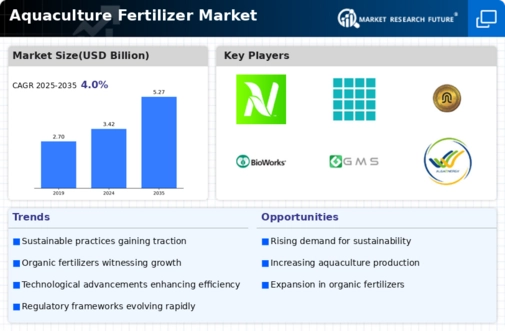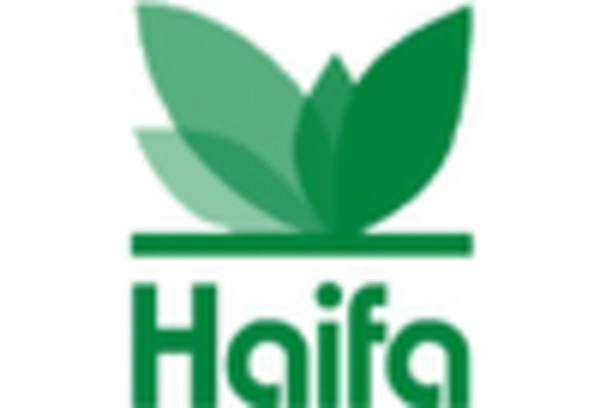Rising Demand for Seafood
The increasing The Aquaculture Fertilizer Industry. As populations grow and dietary preferences shift towards protein-rich foods, aquaculture emerges as a vital source of sustainable seafood. In 2025, the aquaculture sector is projected to contribute significantly to the global fish supply, with estimates suggesting that it will account for over 50 percent of total fish consumption. This surge in demand necessitates the use of fertilizers that enhance fish growth and health, thereby propelling the aquaculture fertilizer market forward. Furthermore, the need for efficient production methods to meet this demand underscores the importance of fertilizers that optimize nutrient availability in aquatic environments.
Expansion of Aquaculture Operations
The expansion of aquaculture operations worldwide is a key driver of the Aquaculture Fertilizer Market. As countries seek to enhance food security and economic growth, investments in aquaculture are on the rise. This expansion is accompanied by a greater need for fertilizers that support the growth of fish and shellfish in various farming systems. In 2025, the aquaculture sector is expected to witness substantial growth, with new farms being established in both coastal and inland areas. This growth trajectory suggests a corresponding increase in the demand for fertilizers that can effectively enhance production. Moreover, the diversification of aquaculture species being farmed further necessitates the development of specialized fertilizers tailored to different environmental conditions and nutritional requirements.
Growing Awareness of Nutrient Management
The increasing awareness of nutrient management in aquaculture is a significant driver for the Aquaculture Fertilizer Market. Producers are recognizing the importance of balanced nutrient inputs to optimize fish health and growth. This awareness is leading to a shift towards fertilizers that provide tailored nutrient solutions, addressing specific needs of different aquaculture species. In 2025, it is anticipated that the market for specialized fertilizers will expand as producers seek to enhance feed efficiency and reduce waste. Educational initiatives and research collaborations are further promoting best practices in nutrient management, thereby increasing the adoption of effective fertilizers. This trend indicates a growing recognition of the role that proper fertilization plays in sustainable aquaculture.
Technological Advancements in Aquaculture
Technological innovations play a crucial role in shaping the Aquaculture Fertilizer Market. The integration of advanced farming techniques, such as precision aquaculture, allows for more efficient use of fertilizers, thereby enhancing productivity. In recent years, the development of smart feeding systems and automated monitoring tools has improved the management of nutrient inputs. These advancements not only optimize growth rates but also minimize environmental impacts, aligning with sustainability goals. As aquaculture practices evolve, the demand for specialized fertilizers that cater to these technologies is likely to increase, further driving market growth. The ability to tailor fertilizer applications based on real-time data could revolutionize nutrient management in aquaculture.
Regulatory Support for Sustainable Aquaculture
Regulatory frameworks promoting sustainable aquaculture practices are increasingly influencing the Aquaculture Fertilizer Market. Governments and international organizations are implementing policies that encourage environmentally friendly farming methods. These regulations often include guidelines for the responsible use of fertilizers, aiming to reduce nutrient runoff and its impact on aquatic ecosystems. As a result, aquaculture producers are compelled to adopt fertilizers that comply with these standards, fostering a market for eco-friendly products. The emphasis on sustainability not only addresses environmental concerns but also enhances the marketability of aquaculture products, as consumers become more conscious of sourcing practices. This regulatory support is likely to drive innovation in fertilizer formulations that align with sustainability objectives.

















Leave a Comment